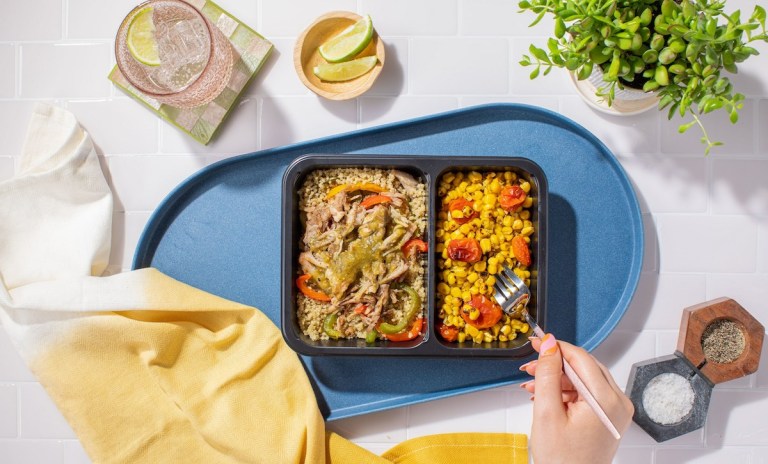
With consumers looking for lower-cost options to replace restaurant delivery and pickup without compromising on speed or convenience, Kroger is expanding its meal solutions business.
The grocery giant’s meals business Home Chef announced Wednesday (Oct. 4) the launch of a heat-and-eat meal delivery service, Tempo, selling subscriptions for single-serve, microwaveable meals with a focus on nutrition.
“The Home Chef team is constantly looking for new ways to make mealtime achievable for more people,” Home Chef CEO Erik Jensen said in a press release. “Tempo, our first new brand launch in Home Chef’s decade-long history, allows us to serve easy meals to households that prioritize convenience and balanced eating in their routines.”
The move comes as Kroger has seen strength in its meal solutions business amid restaurant inflation, with consumers’ ongoing demand for convenience prompting them to adopt other quick, easy options that fit into their budgets better.
On a call with analysts earlier this year, Kroger CEO Rodney McMullen noted that, as the “gap between food at home and food away from home” widens, consumers increasingly turn to “affordable meal solutions” rather than springing for restaurant dining.
“If you look at our Home Chef and products related to that, a customer can get a meal for one-third to one-fourth of what it costs going out,” McMullen said.
Overall, meal delivery services have a significant audience, according to PYMNTS Intelligence’s study “Connected Dining: Ready-to-Eat Meals Are Eating Restaurants’ Lunch,” which draws from a survey of more than 2,300 U.S. consumers in April. The findings revealed that 1 in 10 people order ready-to-eat meals to be delivered to their homes every month.
There has been a trend toward ready-to-eat and heat-and-eat meals, with consumers looking for more affordable alternatives to restaurant takeout for when they want quick, easy meals. Direct-to-consumer (D2C) frozen food delivery provider Yelloh, formerly known as Schwan’s Home Delivery, has been expanding, and food brands such as Campbell’s have seen consumption of their meal solutions rise throughout this inflationary period.
More restaurant brands have been looking to seize on this demand as well, finding ways to stay relevant even when consumers cut back on ordering. Take, for instance, brands such as Red Lobster and P.F. Chang’s launching new meal solutions at the grocery store. And over the summer, New York-based fast-casual chain DIG announced the launch of meal boxes, each featuring different entrée components and side dishes, serving four for $48.
Plus, non-restaurant meal delivery solutions are able to meet consumers’ demand for convenience at a time when many diners are chafing at the cost of restaurant delivery. PYMNTS Intelligence’s report “Connected Dining: Inflationary Pressure Squeezes Restaurant Tips” revealed that many consumers are pulling back across restaurant channels. The study found that nearly 1 in 3 diners said the expectation to leave a tip makes them eat at home more frequently instead of dining at a restaurant.
Similarly, a PYMNTS Intelligence survey of more than 2,300 U.S. restaurant customers late last year revealed that roughly a third of consumers have been making purchases from restaurants less frequently amid inflation.